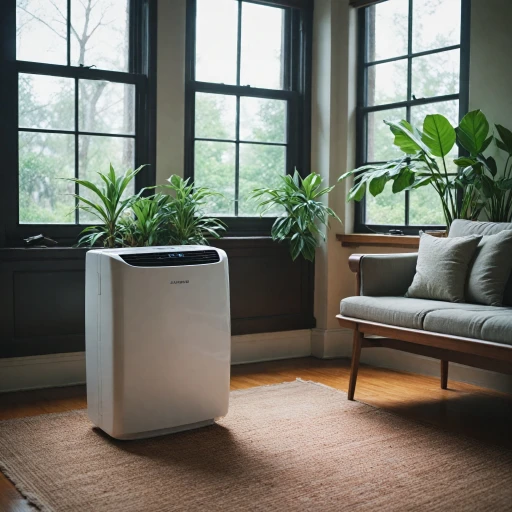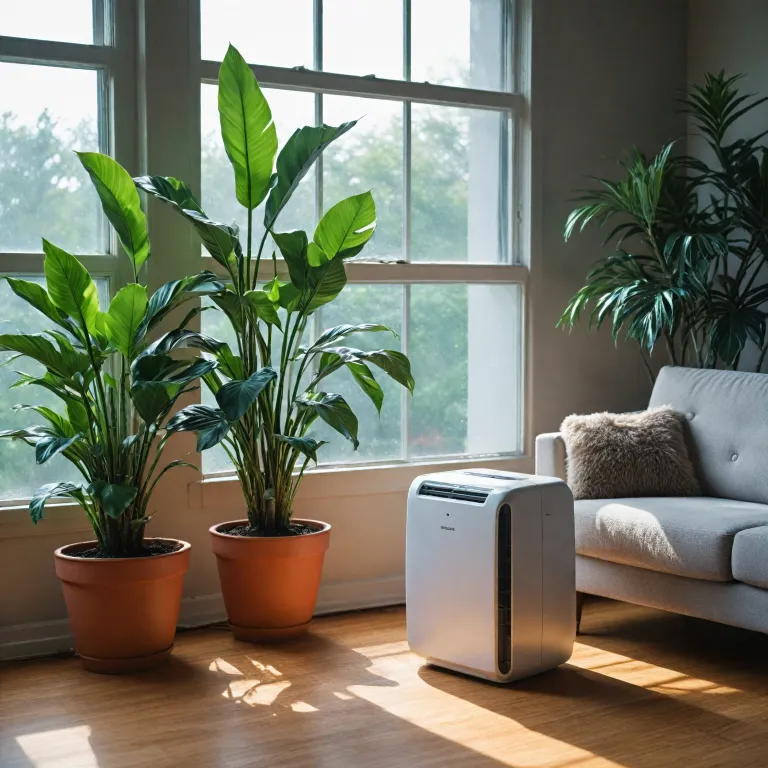How Water-Cooled Portable Air Conditioners Work
Effective Cooling with Water-Based Mechanisms
Water-cooled portable air conditioners stand out due to their distinctive cooling approach, which departs from traditional air conditioning systems. These units harness the power of water as a vital component in heat exchange, differing from air-cooled models which rely predominantly on air to dissipate heat. Understanding this process can help discerning customers looking for efficient cooling solutions suitable for various environments, such as offices or homes.
The core functionality of a water-cooled system involves using water as a medium to transfer heat away from the inner components of the unit. When the refrigerant inside the air conditioner absorbs the heat from a room, it undergoes phase changes in a cycle. This heat is then transferred to water through an inner coil, known as a heat exchanger. The cooler water supposedly absorbs heat from the refrigerant, reducing the temperature of the air that is eventually circulated back into the room. Compared to air cooled conditioners, this process is more effective in sustaining energy efficiency across diverse ambient conditions, making these units particularly viable in warmer climates where traditional air conditioners might struggle.
Additionally, water-cooled systems minimize the energy consumption of the unit by reducing the workload on the compressor. They are often praised for their smart energy usage, which leads to cost-effective cooling solutions. By implementing these water-based conditioners, users could potentially reduce their electricity bills while still maintaining a comfortable indoor environment. For those intrigued by how different portable air conditioners function, the
ultimate guide to battery-powered tent air conditioners offers further insights into niche cooling options.
The intricacies of how these water-cooled systems manage cooling also have implications in terms of maintenance and operational longevity. In subsequent sections, we’ll discuss the advantages, considerations, and maintenance tips that surround water-cooled units as compared to air-based systems, ensuring you have a comprehensive understanding to make the best decision for your cooling needs.
Advantages of Water-Cooled Systems
Why Choose Water-Cooled Conditioning Systems?
When considering portable air conditioning options, water-cooled systems offer a unique set of advantages over their air-cooled counterparts. These features make them an appealing choice for office spaces or homes that require efficient climate control.
- Energy Efficiency: Water-cooled systems often boast better energy efficiency due to their ability to dissipate heat more effectively. By using water as a cooling medium, these systems require less energy to achieve the desired temperature, reducing overall energy consumption.
- Effective Cooling: Thanks to the superior heat transfer capabilities of water, water-cooled units provide consistent and powerful cooling, making them suitable for areas with higher heat loads. The system circulates water through inner tubes and coils to absorb heat, which is then dissipated through a cooling tower or a similar mechanism.
- Quiet Operation: Typically, water-cooled air conditioners operate more quietly than traditional air-cooled units. This is because the unit's external elements, such as the cooling tower, are designed to handle heat more efficiently, resulting in less noise.
- Space-Saving Design: These systems often have a more compact build compared to bulky traditional air conditioners, making them suitable for offices and residential spaces with limited room.
For a more in-depth exploration, consider checking out
the benefits of a 14000 BTU portable air conditioner, which provides insights into powerful cooling capabilities suitable for larger spaces.
Comprised primarily of a durable shell and efficient heat exchange components, water-cooled portable air conditioners offer numerous benefits for users seeking a reliable and energy-efficient cooling solution.
Considerations Before Purchasing
Key Factors to Evaluate Before Buying
When considering the purchase of a water-cooled portable air conditioner, it's crucial to weigh various factors to ensure that your investment meets your cooling needs effectively. While these units offer enhanced cooling efficiency and energy conservation, there are several aspects to deliberate before making a decision.
- Water Supply Requirements: Water-cooled systems necessitate a water source to function, unlike their air-cooled counterparts. It’s essential to confirm that you have a reliable water supply that can cater to the unit's needs. The availability of a cooling tower or suitable water connections in the intended space will also influence the unit's operational efficiency.
- Space and Installation: Consider the space where you plan to install the unit. A portable air conditioner may have different installation needs compared to traditional systems. Ensure that the designated area can accommodate the unit’s size and provides the necessary infrastructure for heat transfer and water drainage.
- Energy Consumption and Costs: These conditioners offer great energy efficiency, but it's wise to evaluate their energy consumption in contrast to potential savings on electricity bills. Since these systems circulate conditioned air through water-cooled coils, consider the cost implications of water usage alongside energy bills.
- Maintenance Needs: Similar to other air conditioners, water-cooled systems demand regular upkeep. Prioritize units that highlight ease of maintenance along with clear instructions for handling refrigerant and coil cleaning to maintain optimal performance and prolong the unit's lifespan.
- Environmental Impact: Water-cooled units are often seen as a more sustainable option during peak heat conditions due to their lower energy usage. Assess the environmental implications of water consumption and ensure that the selected product aligns with your sustainability objectives.
Considering these factors will guide you towards
efficient cooling solutions for a single room, making your purchase decision more informed and beneficial in the long run. Moreover, analyzing air conditioning systems' distinct features, such as how water cooling impacts temperature regulation, can further influence your choice.
Comparing Water-Cooled and Air-Cooled Models
Water-Cooled vs Air-Cooled: Distinguishing Features
When it comes to choosing the right portable air conditioning solution, deciding between water-cooled and air-cooled models is crucial. Both systems have their unique mechanics and benefits, yet they serve similar end goals: effective temperature regulation.
The primary distinction between these two units lies in their cooling process. A water-cooled air conditioner harnesses water to absorb heat using a cooling tower or a water supply source to facilitate heat transfer. These systems are often utilized in environments where efficient heat extraction is a priority, such as commercial settings. On the other hand, air-cooled models rely on atmospheric air to disperse heat through refrigerant coils and an inner tube to cool the air.
Here are some key points to consider:
- Energy Consumption: Water-cooled units can offer greater energy efficiency, especially in regions with high ambient temperatures, where air-cooled models have to work harder to achieve desired temperature levels. This results in less energy consumption over time for water-cooled systems.
- Installation Flexibility: Air-cooled models tend to be easier to install since they do not require an external water supply. This makes them a more suitable choice for residential homes or smaller office spaces without the infrastructure for water-cooled systems.
- Maintenance: The maintenance of water-cooled systems might include attention to water supply aspects and potential mineral deposits within the units. Meanwhile, air-cooled conditioners offer more straightforward maintenance as they generally involve cleaning filters and inspecting the refrigerant line.
Financially, water-cooled products might entail higher upfront costs but can result in savings on electricity bills thanks to their enhanced energy efficiency. Both models offer robust cooling functions; however, choosing the right type depends significantly on your environment's specific requirements, such as available resources and desired energy savings.
In conclusion, both water-cooled and air-cooled portable air conditioners have their places in practical air conditioning demand scenarios. Evaluate your cooling needs and circumstances before making a purchase, ensuring maximum functionality and energy efficiency for your specific use case.
Maintenance Tips for Water-Cooled Units
Optimal Care for Water-Cooled Air Conditioning Units
Regular maintenance of your water-cooled portable air conditioners is paramount to ensuring efficient energy consumption and prolonging the unit's lifespan. Unlike traditional air conditioners, these systems have unique components such as cooling towers and water supplies that require specific attention. Here are some maintenance tips to keep the unit performing optimally:
- Check the Water Supply: Ensure the water supply is clean and unobstructed. Contaminants or blockages in the water circuit can hinder the heat transfer process and reduce cooling efficiency.
- Inspect Coils and Heat Transfer Elements: The inner tube and coil components of a water-cooled air conditioner should be cleaned regularly to avoid buildup which can restrict airflow and affect cooling performance.
- Monitor Water Usage: Keep an eye on the unit's water consumption. Excessive use may indicate a leak or other issues within the system that could impact cooling efficiency.
- Refrigerant Levels: Just like with air-cooled units, maintaining the correct refrigerant levels is crucial. A drop in refrigerant can lead to increased energy usage and decreased conditioning capabilities.
- Regularly Clean the Shell and Outer Parts: Accumulated dust and debris can cause the air conditioner to work harder, increasing energy consumption. Regular cleaning helps maintain optimal energy efficiency.
By following these maintenance practices, water-cooled systems can continue to provide efficient and reliable cooling to environments like your office. Moreover, understanding the energy implications of each component ensures these portable air coolers offer cost-effective conditioning over time.
Environmental Impact and Sustainability
Environmental Responsibility and Sustainability in Cooling Solutions
In the quest for energy efficiency, water-cooled portable air conditioners stand out for their reduced energy consumption. These systems have an edge over traditional air conditioning systems by utilizing water supply and heat transfer mechanics to maintain optimum temperature levels. This dual-action cooling method not only provides efficient conditioning of a space but also lessens the burden on electricity, thus supporting sustainability efforts.
Water-cooled units harness the thermal properties of water as an efficient medium for heat absorption. Unlike their air-cooled counterparts, which rely solely on air to dissipate heat, water-cooled systems achieve higher energy efficiency by using water’s superior thermal capacity. The process effectively lowers the need for additional cooled air, which traditional units might otherwise struggle to generate, leading to increased energy conservation.
Beyond immediate energy savings, water-cooled air conditioners contribute to broader environmental goals by minimizing the utilization of refrigerants. Many conventional air conditioners rely heavily on refrigerants, which can be harmful if leaked into the atmosphere. By ensuring more efficient heat transfer with water, water-cooled models decrease dependency on these substances.
The adoption of water-cooled systems aligns with contemporary objectives aimed at reducing carbon footprints through optimized energy performance. Offices and homes benefit from a lower environmental impact without compromising the comfort provided by air conditioning, making water-cooled units a viable choice for eco-conscious consumers seeking high-performance cooling solutions. These systems underscore the balance between effective cooling and sustainable practices essential for modern living.

